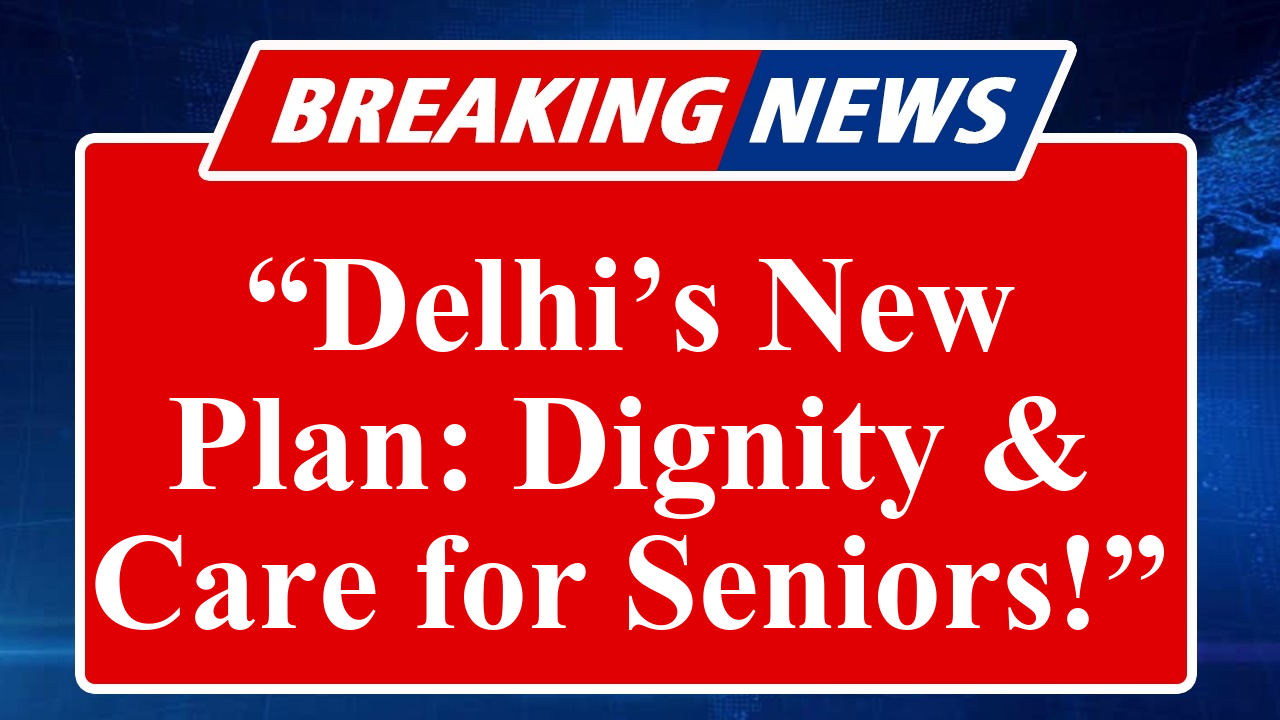Delhi’s new elderly welfare scheme expands financial and healthcare support for seniors, offering pensions and free medical coverage. With 80,000 new pension slots and the Sanjeevani Yojana, the initiative aims to ensure dignity and care for the elderly, addressing their financial and medical needs.
Delhi’s Elderly Welfare Scheme: A Step Toward Dignified Aging
The Delhi government has launched a comprehensive welfare initiative to support its senior citizens, addressing their financial and healthcare needs with two key programs: the expanded Old Age Pension Scheme and the Sanjeevani Yojana. Announced recently, these measures aim to provide a safety net for the elderly, ensuring they live with dignity and access to essential services.
Under the Old Age Pension Scheme, the government has opened 80,000 additional registration slots, bringing the total number of beneficiaries to 5.3 lakh. Seniors aged 60–69 receive a monthly pension of Rs. 2,000, while those above 70 get Rs. 2,500. An additional Rs. 500 per month is provided to individuals from Scheduled Castes (SC), Scheduled Tribes (ST), and minority communities. Eligibility requires a minimum of five years of residency in Delhi and an annual family income below Rs. 1 lakh. Applications are processed through the e-District portal, with Aadhaar-linked bank accounts mandatory for disbursal via the Public Financial Management System (PFMS). Over 10,000 applications were received on the first day of the scheme’s expansion, reflecting its high demand among Delhi’s elderly population.
Complementing the pension program is the Sanjeevani Yojana, a healthcare initiative ensuring free medical treatment for all Delhi residents over 60, regardless of hospital or cost. This scheme addresses the rising healthcare needs of seniors, many of whom face chronic conditions like hypertension, diabetes, and respiratory issues. Delhi has an elderly population constituting 11% of its total, higher than the national average, with many living independently and facing challenges such as loneliness and limited access to timely care. The Sanjeevani Yojana aims to bridge this gap by covering all medical expenses, offering a compassionate approach to elderly healthcare.
The pension scheme’s application process is streamlined via the e-District portal, where applicants must submit proof of age, residence, income declaration, and, for SC/ST or minority applicants, caste certificates or self-declarations verified by religious institutions. The District Social Welfare Office processes applications within 45 days, and payments begin the following month. The scheme excludes those already receiving pensions from other government sources to ensure equitable distribution.
Additionally, the central government’s Ayushman Bharat Pradhan Mantri Jan Arogya Yojana (AB PM-JAY) has been expanded to cover all senior citizens aged 70 and above, regardless of income, with health insurance up to Rs. 5 lakh per family annually. This complements Delhi’s efforts, providing seniors with access to secondary and tertiary care hospitalization. Seniors already enrolled in other schemes like the Central Government Health Scheme (CGHS) can opt for AB PM-JAY, enhancing their healthcare options.
Private organizations like Samarth Elder Care are also stepping in, offering personalized home care, emergency support, and companionship services in Delhi. With a focus on holistic well-being, such services address the social and emotional needs of seniors, particularly those living alone or with chronic conditions. These initiatives, combined with government schemes, reflect a growing recognition of the challenges faced by Delhi’s elderly, including financial insecurity and healthcare access.
The Delhi government’s initiatives align with national efforts like the National Programme for Health Care of the Elderly (NPHCE), which provides specialized healthcare services at various levels, and the Integrated Programme for Senior Citizens (IPSrC), which supports NGOs in offering shelter, food, and medical care. These programs collectively aim to foster active and productive aging while ensuring seniors’ basic needs are met.
Disclaimer: This article is based on information from government websites, recent news reports, and posts on X. While care has been taken to ensure accuracy, readers are advised to verify details with official sources before enrolling in any scheme.

